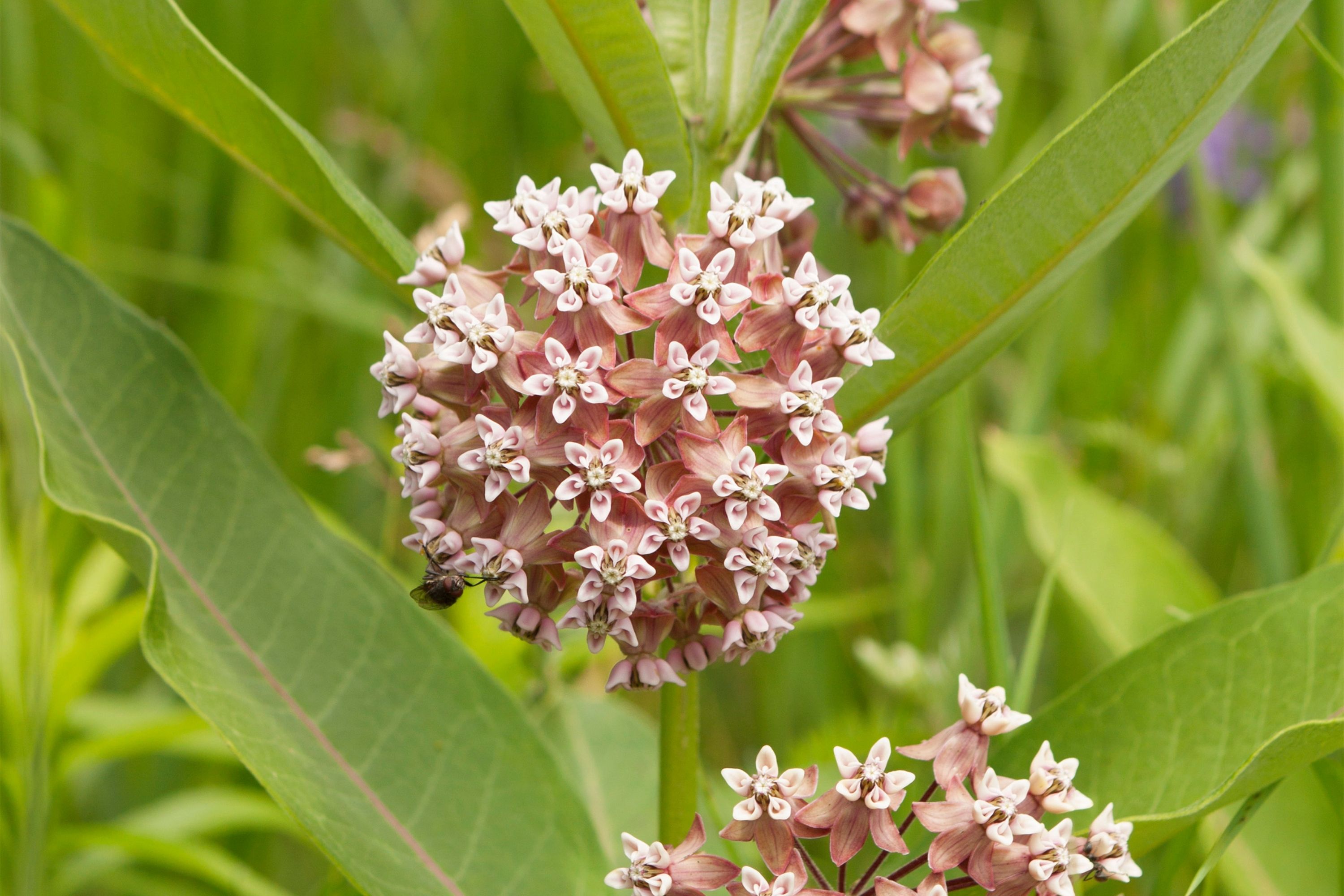Common milkweed
(Asclepias syriaca)

Description
Asclepias syriaca, commonly known as the Common Milkweed, is a herbaceous perennial plant species that belongs to the Apocynaceae family. It is native to North America and can be found in most parts of the continent, from the Gulf of Mexico to Canada. Physical Characteristics The Common Milkweed can grow up to a height of 1-2 meters and a width of 0.5-1 meter. The plant's stems are stout, erect, and hairy, with a milky sap that exudes when broken. The leaves are opposite, broadly ovate, and can grow up to 25 centimeters in length. They are also hairy on both sides, with a pale-green color that darkens with age. The flowers of the Common Milkweed are very fragrant and bloom in large umbels from June to August. The individual flowers are small and star-shaped, with five pink or purple petals that are reflexed backward. The inflorescence is also attractive to pollinators, particularly bees, butterflies, and hummingbirds. The fruits of the Common Milkweed are elongated follicles, about 10-15 centimeters in length, that split open at maturity to release numerous seeds that have silky hairs attached to them. The silky hairs aid in wind dispersal, allowing the seeds to travel long distances. Habitat and Distribution The Common Milkweed is a hardy plant that can grow in a wide range of soil types and environments, from sandy beaches to moist meadows, fields, and roadsides. It can also tolerate drought and is resistant to most pests and diseases. The plant is widely distributed across North America, ranging from the eastern seaboard to the Rocky Mountains and from southern Canada to northern Mexico. It is particularly abundant in the Midwest and Great Plains regions of the United States. Ecological Importance The Common Milkweed is an essential plant for many species of wildlife, particularly insects. The nectar of the flowers provides an important food source for bees, butterflies, and other pollinators, while the leaves and stems of the plant are a preferred food source for the larvae of the Monarch butterfly. The Monarch butterfly, in particular, has a unique relationship with the Common Milkweed. The female butterfly lays its eggs exclusively on the milkweed plant, and the larvae that hatch feed on the leaves and stems of the plant. The milkweed plant also contains cardiac glycosides that are toxic to most animals but are not harmful to the Monarch butterfly. These glycosides are stored in the larvae's body and are passed on to the adult butterfly, making it distasteful and toxic to predators. Apart from its ecological importance, the Common Milkweed also has medicinal properties. The plant contains various compounds that have been traditionally used for treating a variety of ailments, including dysentery, asthma, and rheumatism. The milky sap of the plant is also believed to have antibacterial properties and has been used topically to treat warts and other skin conditions. Cultivation The Common Milkweed is a relatively easy plant to cultivate and can be propagated through both seeds and cuttings. Seeds can be sown in the fall or early spring, either directly into the ground or in pots. Cuttings can be taken in the spring or early summer and should be planted in a well-draining soil mix. The plant prefers full sun and well-draining soil but can tolerate a wide range of soil types and conditions. It is also drought-tolerant and does not require frequent watering. Conclusion The Common Milkweed is an important plant species in North America, both ecologically and culturally. Its unique relationship with the Monarch butterfly is a testament to the intricate web of relationships that exist in the natural world.
Taxonomic tree:







